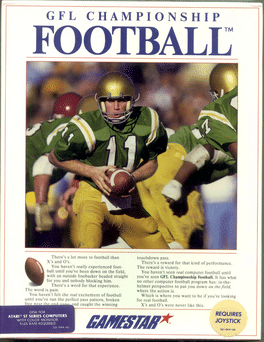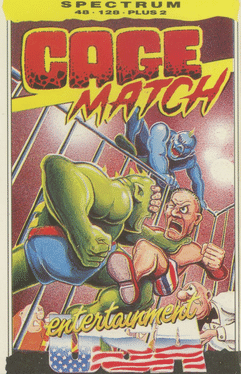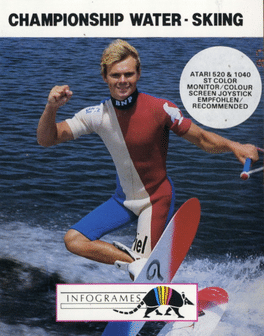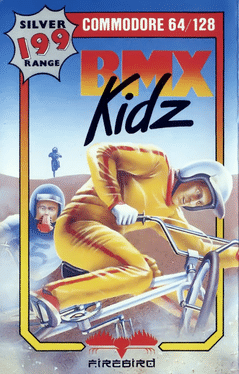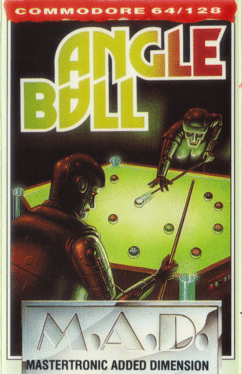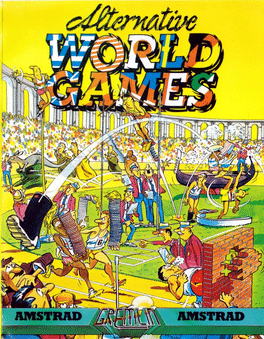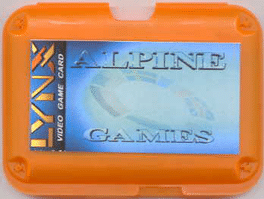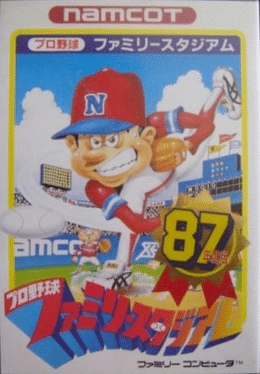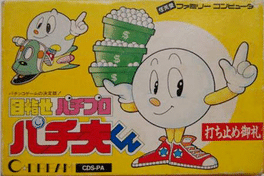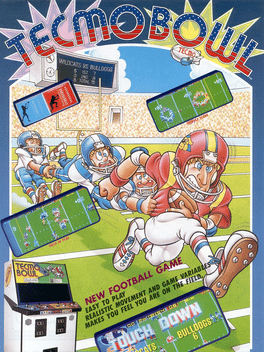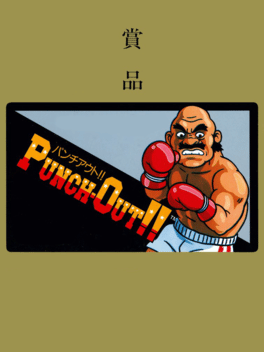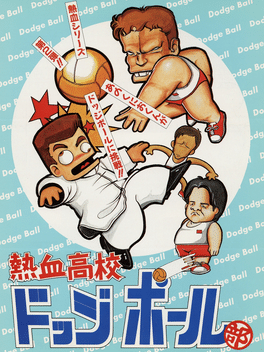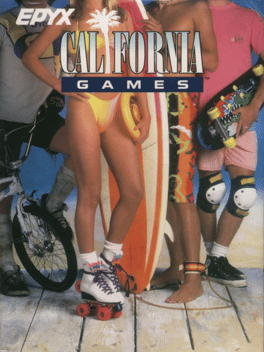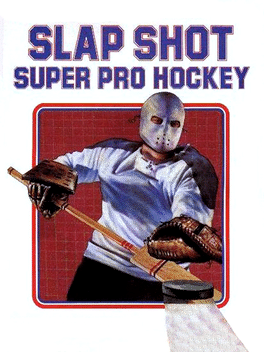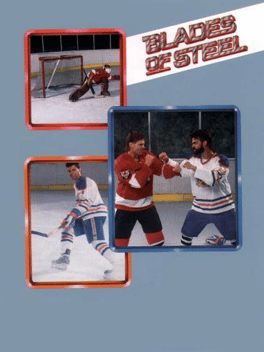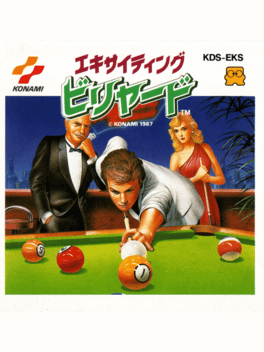New Sport Games - Page 233
-
Galactic Games
1987
-
Cage Match
1987
-
BMX Kidz
1987
BMX Kidz
1987
A low budget BMX racing game published by Firebird Software for several 8-bit homecomputers. -
Angle Ball
1987
Angle Ball
1987
Here's an original twist – a hexagonal pool table! You can play against a friend or the computer at any one of over twenty different table layouts. There are only seven balls on the table instead of the normal fifteen, and if you fail to pot a ball three times, you lose the frame. There's not that much else to say about it, but one nice feature is that you can design your own table layouts and save and load them for later use. -
Alternative World Games
1987
Alternative World Games is a sports themed game for the ZX Spectrum and Commodore 64. -
Alpine Games
1987
-
Pro Yakyuu Family Stadium '87
1987
Not so much a sequel to Pro Yakyuu Family Stadium than an enhanced rerelease with updated rosters. It was published by Bandai for the Famicom in late 1987. Pro Yakyuu Family Stadium '87 is the second game in Namco's long running Family Stadium series, also known as Famista. It's a traditional baseball game that allows one human player against the CPU, two competing human players and two competing CPU players in a "Watch" spectator mode. Rather than being a full sequel to Pro Yakyuu Family Stadium the game is instead an updated version of the original, which was reflected in its lower price at release. It adds a few features and updates the official rosters for the athletes, but is functionally identical to the original Family Stadium. This specific type of annualization would become common practice for sports game franchises such as Madden NFL and NHL. It's worth noting that this game is unrelated to R.B.I. Baseball 2 from Tengen. The original R.B.I. Baseball and Family Stadium were one and the same, the former -
Mezase Pachi Pro: Pachio-kun
1987
The first game to feature Pachio-kun, the mascot for a series of pachinko-themed games by Coconuts Japan, Mezase Pachi Pro: Pachio-kun ("Aiming For Pachinko Pro: Pachio-kun") is simply a virtual pachinko hall with 72 different machines on which the player may try their luck. The game rewards attentive pachinko veterans by having several of the machines possess quirks, such as the frequency of payouts, certain pins being bent that will favor a ball's route to the bottom and the like. Pachio-kun simply has to lean in to examine the machines closer to ascertain how to make the machine pay out. The overall goal is to keep playing each machine, winning either through a determined strategy or simple perseverance, until all the machines have been emptied of their contents. Doing so will win the game. -
Center Court
1987
-
Tecmo Bowl
1987
Tecmo Bowl
1987
star 7.1A side-scrolling, four-player American football game that can be played as two-on-two, one-on-two, etc. The game is somewhat primitive in that there is no play pattern selection; only the receiver can be selected before play begins. One player controls the QB, the other plays the wide receiver/running back. -
Punch-Out!!: Shouhin-ban
1987
Also known by the unofficial titles of Punch-Out!! Gold and Punch-Out!! Special, with the in-game title of simply Punch-Out!!, recently released on the Japanese Nintendo Switch Online as Punch-Out!!: Shouhin-ban (Prize Version), this was the first released version of Punch-Out!! for the NES/Famicom, which was released in Japan, as a prize for the participants of the official NES Open Tournament Golf (Golf Tournament US Course) competition. The main differences from the later versions is that the Dream Bout with Mike Tyson or Mr. Dream didn't exist yet, and Mr. Macho Man was the last opponent. -
Nekketsu Koukou Dodgeball-bu
1987
The original Japanese arcade version of the game which would be later be recognized as Super Dodge Ball. -
California Games
1987
-
Slap Shot: Super Pro Hockey
1987
Super Pro Hockey is a one or two-player hockey game. There are four handicap/skill levels to choose from after selecting whether or not the player wants a one or two-player game: Amateur, Rookie, Pro, Super Pro. Essentially, changing the handicap results in changing speeds to the gameplay, from low (Amateur) to high (Super Pro). There are no teams, only Home and Visitor. Each team has three players and a goalie. The home team is tan and the visitor team is green. The player can only control one character at at time, and this character is colored lighter than the rest of the player's team. Goalies are controlled by the computer. In late 2018, discovering that they had over 200 loose cartridges of Slap Shot: Super Pro Hockey, the Blue Sky Rangers had new boxes and overlays printed and released the remaining stock as fully boxed copies. -
Blades of Steel
1987
Blades of Steel
1987
star 8.1From the opening Face-Off it's six on six pro-style hockey at its best. Their are eight teams for you to captain: Los Angeles, New York, Vancouver, Montreal, Edmonton, Minnesota, Toronto and Chicago. You can challenge a friend, or take on a multi-talented computer squad. You can also choose from three difficulty levels - Junior, College and Pro. Throughout the game, you'll constantly be tested by every intense element of championship hockey, from Penalty and Overtime Scenes to Knockout Smash-Hit Fight Scenes. Speed, strength, quickness and instinct are talents you must possess if you plan to prevail, especially when the anger flares, gloves come off and fists start flying. It's hard hitting action at its toughest. And you'll soon learn that in this league nothing's ever given to you, and before you can reach your goals - you have to score them. You've gotta master the artful skill of a finesse player and the bone crushing brutality of an enforcer. You'd better be versatile as well, because you must skillfully cont -
Tsuppari Oozumou
1987
Tsuppari Oozumou
1987
Tsuppari Oozumou is a sumo wrestling game. The goal is to wrestle the opponent out of the ring. The opponents get harder as the game progresses. Different moves can be performed depending on button and directional combinations. -
Family Trainer: Meiro Daisakusen
1987
A Famicom game developed by Bandai as part of their Family Trainer series, which all use the Family Trainer (Power Pad) accessory. The goal is to explore mazes. The fifth in Bandai's series of Family Trainer games, created for the accessory with the same name (or Power Pad in the US). Unlike the others, which tended to be athletics/exercise games, Meiro Daisakusen ("Epic Maze Battle") is a maze-exploring light RPG where the goal is to walk and jump around mazes to find items and, eventually, the exit. The game's controls are dictated entirely by the Family Trainer/Power Pad. Different buttons will either cause the protagonist to jump, walk forward, walk backwards, turn left or right or switch their position to the left, right or center of the screen. While searching for the exit, players must be mindful of the various enemies that also inhabit the mazes, most of which must be avoided by jumping over them or running past them. -
Exciting Billiard
1987
Exciting Billiard
1987
Exciting Billiard is a Sports game, developed and published by Konami, which was released in Japan in 1987.
